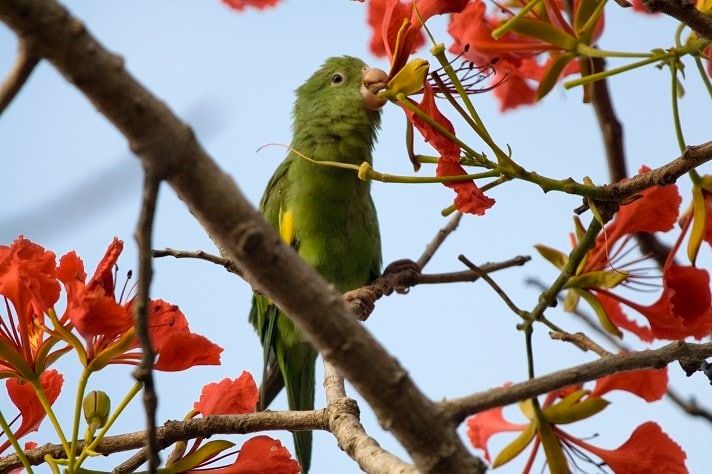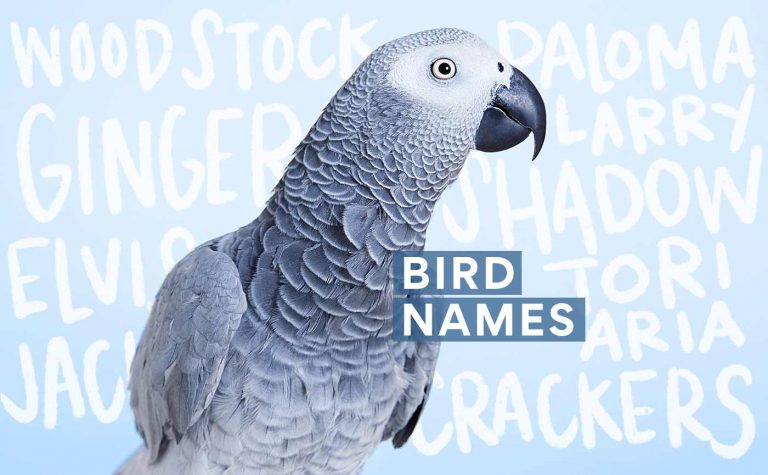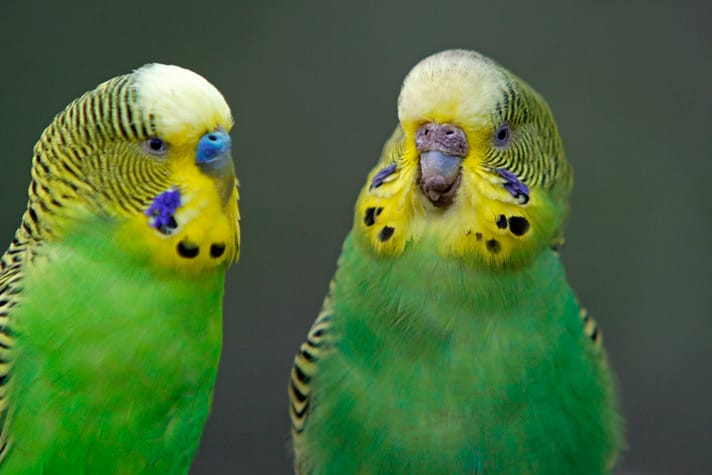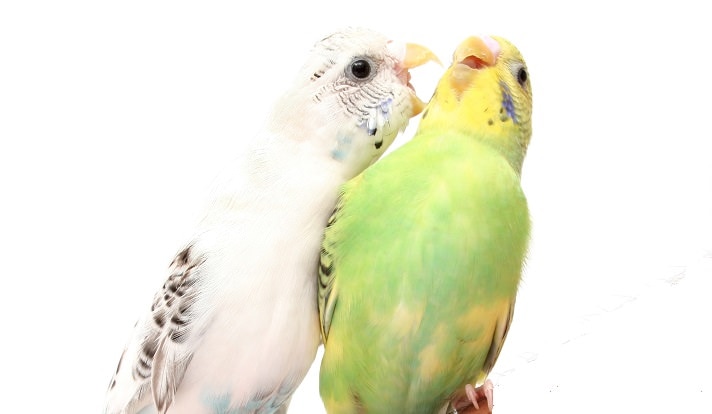Named after Alexander the Great, the Alexandrine parakeet was once a companion to only the highest nobility. Today, they still maintain a devoted following and, while they are not as cuddly as a cockatoo, their amicable nature makes them extremely popular.
Here are six things you need to know about Alexandrines.
1. Everyone Is “The Chosen One”
What does this mean? When somebody new walks through your door, you are history to your Alexandrines until your visitors leave.
Once again, my husband, Frank, was “The Chosen One.”
But this time, it wasn’t to a starry-eyed female Moluccan cockatoo, it was to a VERY flirtatious and opinionated 7-year-old male Alexandrine parakeet named Fred.
Frank was not inclined for a “bromance” with Fred, but Fred would have it no other way.
Being an equal-opportunity “perch-a-holic”, there was no shoulder or head that Fred would not land on. When Fred spied someone new in the house, he wasted no time flying over and landing on the unsuspecting “victim” announcing his arrival with “Oh Hi.” He would then happily chatter and chuckle his way into his new admirer’s heart, ignoring us like we were yesterday’s news.
2. Call Them Independent
Alexandrines are extremely independent. They can easily keep themselves entertained by talking and whistling happily to themselves or by studiously chewing on bird toys.
Alexandrines are not overly “needy,” but that independence can also cause them to be a bit stubborn when they want something and want it THEIR way.
Fred had been with us about two years when he decided that he would rather sleep outside his bird cage rather than inside.
Trying to get Fred inside that cage at night was about as productive as to trying to bathe a cat.
Fred had three tactics to avoid going into his cage:
- Flying away and laughing as he sailed down the hallway.
- Fluffing up every single feather on his head, growling, pinning his eyes and giving my hand a very firm “Chomp!” when I asked him to step up. This was then followed by Tactic No. 1.
- And finally, my most favorite: the highly dramatic throwing back of his head with a bemoaning “Awwwww NO!” This tactic was followed by Tactic 2 and Tactic 1, in that order.
After a while, Fred and I both tired of this nightly ritual, so I decided to do something different, try it his way.
I attached a perch outside the cage just above Fred’s door. Then I took a large rectangle of soft blue, attached it above the new perch, and sat back to see what happened.
At 7:30 p.m., Fred flew over to his cage to inspect the new perch. He poked his head underneath the fleece, gave a loud wolf-whistle and climbed inside. After fussing around with his “tent,” Fred was completely hidden from view, except for his long tail. I heard him contentedly chuckling and mumbling to himself.
Seconds later, Fred’s head appeared as he announced to the world, “Night night, Fred-bird!” Then he disappeared and was quiet for the rest of the night.
Fred has never missed a night “camping out” for the past 4 years. He taught me how to better “listen” to his needs, and I learned that something very simple could make a bird extremely happy.
3. Size Does Matter
The overall length of an Alexandrine from head to tail measures around 24 inches, and about half of that is made up of their beautiful, long tail. Their wingspan is equally impressive for a bird their size.
It is important to consider a cage much larger than you might think for an Alexandrine in order to keep tail feathers and wing tips from becoming frayed or broken.
In the evening before Fred comes out, he hangs from the very top of his cage and flaps his wings wildly in anticipation.
Fred uses every inch of space in that cage. Because of that, most of Fred’s toys are strategically placed so that he doesn’t get tangled up in them.
Being agile flyers, Alexandrines enjoy a safe, open space outside their cage to sail around in if possible, before inevitably coming back to land on your head!
4. Splish Splash!
Alexandrines LOVE water. But even so, they are only going to take a bath when and where they want.
I have a perfectly acceptable shower that I am perfectly willing to share with Fred. But the shower is not where Fred wants to take a bath. He prefers his 48oz. water bowl. Can he fit in his water bowl? Nope. Does that stop Fred? Not hardly. I tried a larger bowl and was rewarded with Tactic No. 3.
Alexandrines take bath time very seriously—at least they LOOK like they do!
Fred’s way of announcing that he is ready for his bath is to stand in that ridiculously small bowl and stick the top of his head underwater. Each head dunking is followed up with a very loud “Huh? Huh? Huh?” that tells me I’d better be getting his mist bottle ready to shower him as he splashes around like a too-big child in a too-small pool.
Fred also prefers to bathe to music. His favorite song is “Shop-Vac Symphony,” otherwise known as turning on the vacuum cleaner and letting it run for the entire duration of Fred’s water ballet.
5. Know Thy Parakeet
Alexandrines have often been called “the gentle bird with the big beak.”
While they are quite capable of being destructive, the good news is that generally they are not. They can also develop quite a vocabulary and love to carry on conversations with their human friends, as well as with themselves.
Alexandrines can live up to 30 years. They are sexually dimorphic, meaning that males and females are easily distinguished by their markings. Both sexes share beautiful luminous green coloration, as well as candy-corn colored beaks. After about 3 years, males develop a black ring around their necks, as well as light pink and blue bands across the nape. Females remain solid green without the black, blue or pink bands.
6. To Be Or Not To Be
There are some parrots that are not for the first-time parrot enthusiast. Some might say that the Alexandrine would fall into that category due to their independent nature. I tend to disagree.
Daily interaction and socialization with any parrot species is a must for them to lead happy and healthy lives with us.
And proper understanding as well as education on our part makes it much easier to develop lasting relationships with them.
Posted by: Chewy Editorial
Share:









